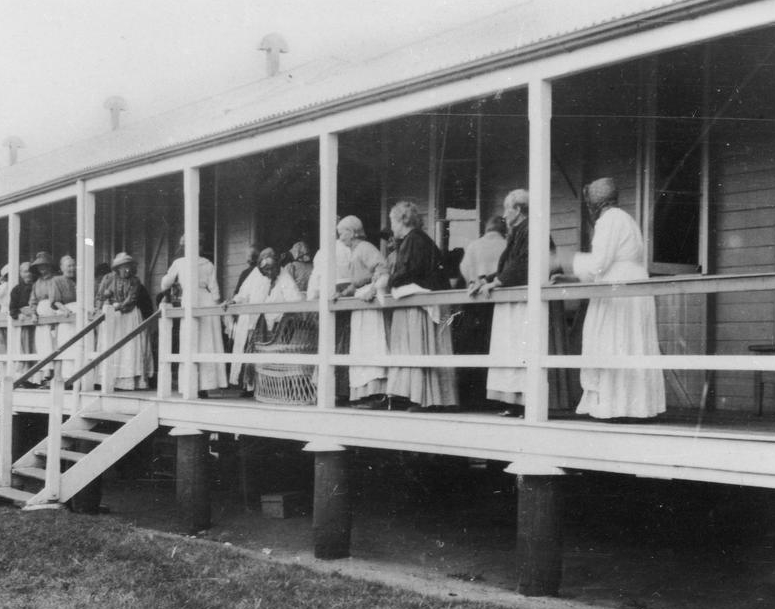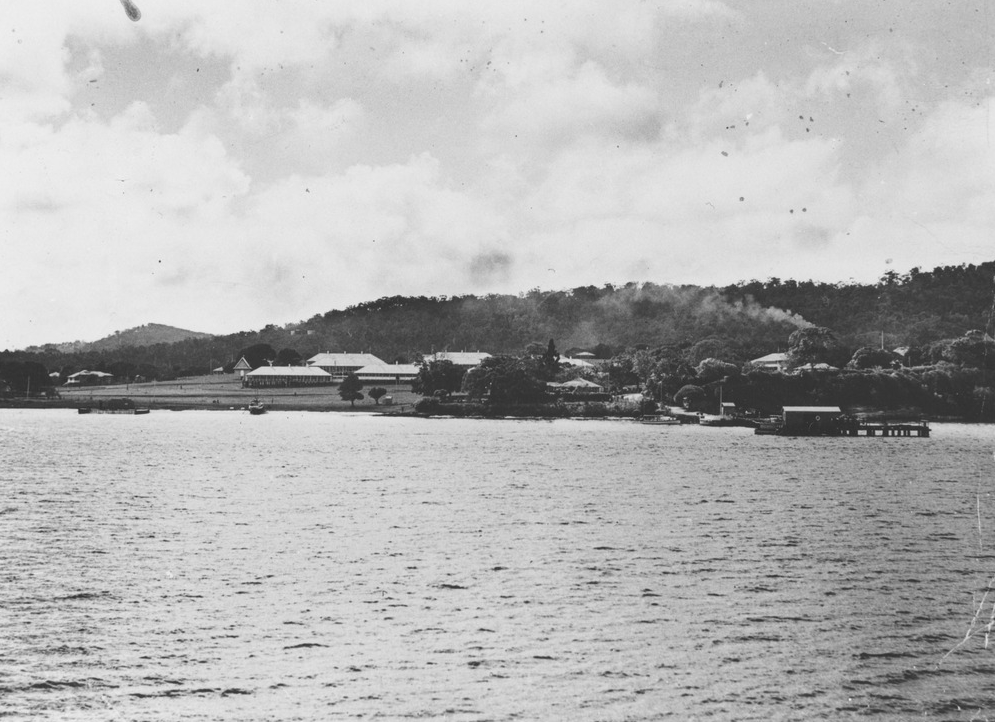Mary Flynn (née Keating) (ca. 1834 – 1883) was an Irish immigrant who arrived at Moreton Bay with her husband John Flynn in 1854 when she was aged 22 and he was 26. In 1859, for reasons unknown, Mary became paralysed and in 1865, aged only 31, she was sent from the Brisbane Hospital to the Dunwich Benevolent Asylum on Stradbroke Island. The register noted that she had a daughter named Mary and that two sons were deceased. Mary died at the Dunwich Benevolent Asylum in 1883 aged just 49.
Mary was born in Rathcale (Rathkeale), County Limerick, Ireland in about 1834. She was the daughter of Paul Keating, a farmer, and Margaret Shannon. In about 1852, when Mary was 18 years old, she married a local man, John Flynn.
In 1854, John and Mary emigrated to Queensland on the ship John Fielden. Their surname was entered on the ship’s passenger indent as ‘Flin’. John was described as a labourer aged 26 and Mary was aged 22. No children were listed.
In about 1859 Mary became paralysed and in 1865 when she was 31 years old, she was sent from the Brisbane Hospital to the Dunwich Benevolent Asylum on Stradbroke Island. The admission register recorded that she had been paralysed for six years. Mary said her husband was ‘last heard of on the Burnett’ and that her daughter Mary was living with a Mrs Reardon in Fortitude Valley. It was also noted that two sons were deceased. Mary said that she was a ‘Housewife’, Roman Catholic and could not read.
After nearly six years at the Dunwich Benevolent Asylum, Mary was discharged on 20 May 1872 but readmitted again on 3 June 1880. She was last seen by the medical officer on 5 April 1883 and died at Dunwich on 11 April 1883 aged 49.
Mary’s record also noted that that her husband was No. 1392 in the Male Register. However, John Flynn did not enter Dunwich until April 1885 after spending nine months in the Rockhampton Hospital with chronic rheumatism. He was also born in Rathkeale, Limerick, the son of James Flynn, a labourer, and Margaret Ryan. Flynn’s entry stated that he was ‘Never’ married but this is noted as ‘false’ with a further notation that his wife was No. 3 in the Female Register.
Flynn described himself as a labourer and miner and said that he could read and write. He told the Dunwich staff that he had remained in Queensland since arriving on the ship John Fielding [sic] about 33 years ago. Flynn said he had worked in Gympie, Palmer, Crocodile, Peak Downs, Ravenswood, Charters Towers, Etheridge and Mount Morgan, and that he was last employed shearing at Gayndah. He had no property and no cash, but did have a change of clothes.
John Flynn was discharged on 19 June 1888 and readmitted on 5 February 1889. He was last seen by the medical superintendent on 24 June 1889, the day he died, and was buried on 26 June 1889. It is likely that John and Mary Flynn were buried in unmarked graves at the Dunwich Cemetery, like thousands of other paupers from the Dunwich Benevolent Asylum.
Citation
Jan Richardson, ‘Mary Flynn (née Keating) (ca. 1834 – 1883)’, Harry Gentle Resource Centre, Griffith University, 2022, https://harrygentle.griffith.edu.au/life-stories/mary-keating/.
Archival Resources
QSA, Register of immigrants: John Fielden, 1854, ITM18474 (Digital Image No. DR38664, p. 55).
John and Mary Flin [sic] per John Fielden, arrived Moreton Bay 19 Jun 1854.
Mary Flynn (née Keating), Entry No. 3, first admitted Dec 1865.
John Flynn, Entry No. 1392, first admitted 11 Apr 1885.
Newspapers
The Benevolent Asylum, Telegraph [Brisbane], 21 Apr 1883.
Current news, The Queenslander, 6 Jul 1889.





